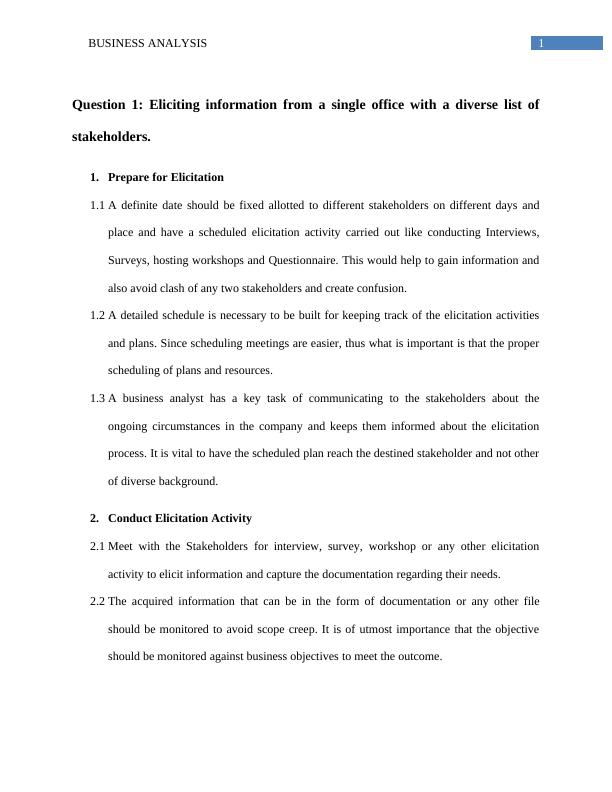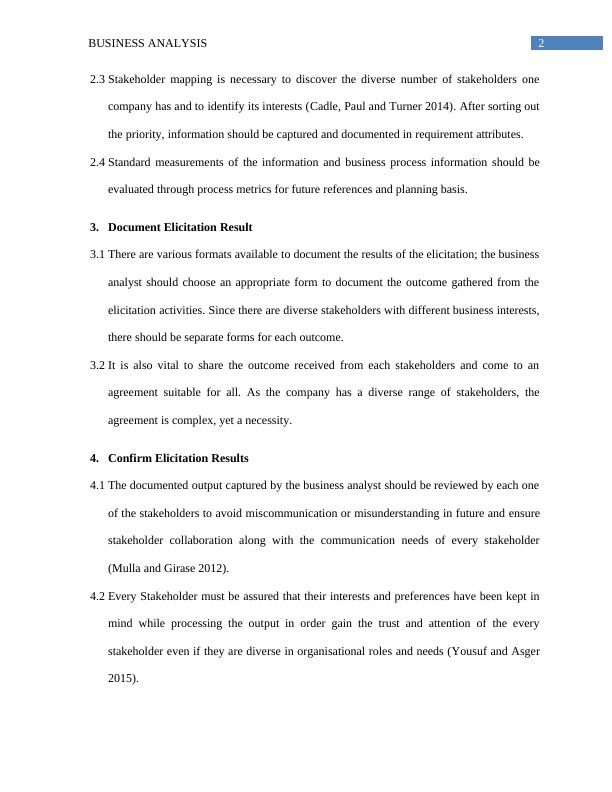Business Analysis
Added on 2022-12-30
9 Pages1825 Words26 Views
End of preview
Want to access all the pages? Upload your documents or become a member.
Top 5 Requirements Elicitation Techniques
|4
|660
|206
System Analysis and Design
|15
|2387
|424
Significance of Interpersonal Conflict Management in Project Management
|5
|564
|134
The Role of the Business Analyst in Integrated Library System
|12
|3020
|70
Initiate Programs Assessment
|8
|2775
|18
New System Development Relies on External Components: Implications for Analysis and Design
|8
|1722
|229



